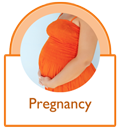If breastfeeding is not possible, a commercial infant formula is the only suitable substitute for babies up to 12 months of age. This information is for families who have decided to bottle feed.
Choosing an infant formula
Choose an infant formula that is:
- suitable for the age of your baby
- easy to buy locally
- affordable.
How to make up infant formula
Follow the instructions on the infant formula tin for your baby's age.
Safe infant formula handling for childcare services
Feeding your baby
Demand feeding is when you feed your baby when they show you signs of hunger.
Signs that your baby is ready to feed:
- crying is a late sign of hunger – don’t wait until then
- hands up to mouth
- sucking movements
- soft cooing, sighing sounds
- head movements and stretching.
Visual guide to baby feeding cues
The information provided by the infant formula manufacturer on feed volumes is a guide only.
How do you know when your baby has had enough:
- Babies know when they are hungry and when they have had enough.
- Your baby may turn away from the bottle when they have had enough.
- Your baby may not always finish their bottle.
- Expect your baby to vary in the amount taken day to day and as they grow.
- Remember all babies are different. If your baby has about six or more wet nappies in 24 hours and is growing, your baby is having enough to drink.
Talk to your child health nurse for personalised advice.








